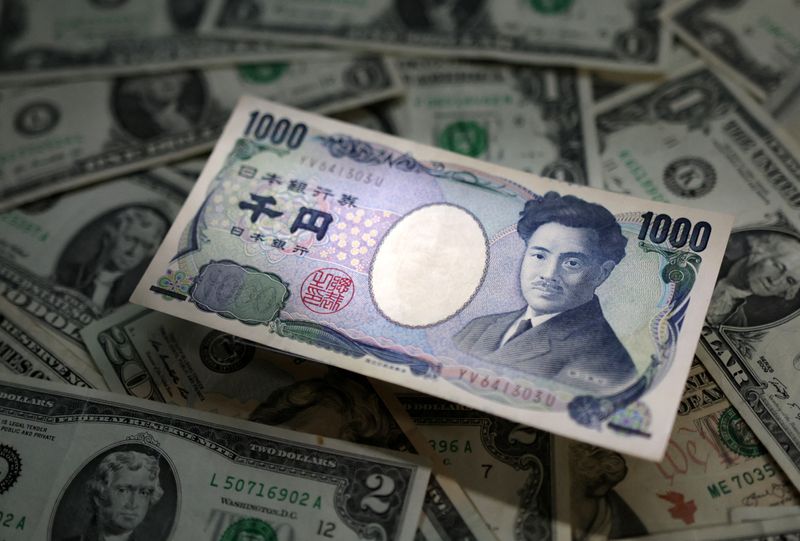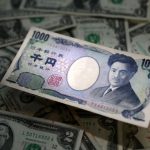LONDON/SYDNEY (Reuters) -The yen weakened on Friday after the Bank of Japan signalled it would be judicious about further policy tightening, with its governor refraining from giving clear indications as to whether a hike in interest rates was on the cards in the coming months.
The dollar rose 0.74% to 143.65 yen, close to an overnight high of 143.95 on Governor Kazuo Ueda’s remarks after the BOJ kept unchanged its overnight call rate target at 0.25% by a unanimous vote, as widely expected.
“Our decision on monetary policy will depend on economic, price and financial developments at the time. Japan’s real interest rates remain extremely low. If our economic and price forecasts are achieved, we will raise interest rates and adjust the degree of monetary support accordingly,” Ueda said at his post-meeting press conference.
“We had expected that Ueda would warm up to another rate hike,” said Niels Christensen, chief analyst at Nordea Bank.
The rise in the dollar against the yen showed relief that Governor Ueda, during his speech, did not really touch rates policy, Shoki Omori, chief Japan desk strategist at Mizuho Securities, said.
“It seems like he focused on economic data and tried to avoid answering market comments. He was hiding his hawkishness,” Omori said, adding that the dollar’s rise against the yen was likely temporary.
Markets were also digesting data on Japanese consumer prices, out on Friday, which showed core inflation ticked up to 2.8% in August, while overall inflation hit 3.0%.
It has been a tough week for the Japanese currency, with the euro gaining 2.8% to 160.35 as speculators booked profits on recent long yen positions.
The euro also firmed to $1.1154, up 0.7% on the dollar for the week and within striking distance of the August peak of $1.1201. A break there would target a July 2023 top of $1.1275.
DOLLAR DECLINE
Much of the rest of the world is heading in the other direction to Japan, although a much-anticipated rate cut by China’s central bank has proved elusive. China unexpectedly left benchmark lending rates unchanged at the monthly fixing on Friday.
China has been hinting at other stimulus measures, enabled in part by the U.S. Federal Reserve’s aggressive easing that shoved the dollar to a 16-month low on the yuan.
Major state-owned banks were seen buying dollars in the onshore spot foreign exchange market on Friday to prevent the yuan from appreciating too fast, two people with knowledge of the matter said.
The big event of the week remained the Federal Reserve’s 50 basis points rate cut on Wednesday.
Markets imply a 44% chance the Fed will cut by another 50 bps in November and have 73 bps priced in by year-end. Rates are seen at 2.85% by the end of 2025, which is now thought to be the Fed’s estimate of neutral.
That dovish outlook has bolstered hopes for continued U.S. economic growth and sparked a major rally in risk assets. Currencies leveraged to global growth and commodity prices also benefited, with the Aussie topping $0.6812.
The U.S. dollar index was stuck at 100.7 and just above a one-year low.
Sterling was another gainer after the Bank of England kept rates unchanged on Thursday, while its governor said it had to be “careful not to cut too fast or by too much”.

The pound was up 1.34% for the week so far at $1.3301, supported by Friday’s solid retail sales figures, having hit its highest since March 2022.
It also hit its strongest against the euro in more than two years, with the common currency dropping to as low as 83.81 pence.
To read the full article, Click Here

